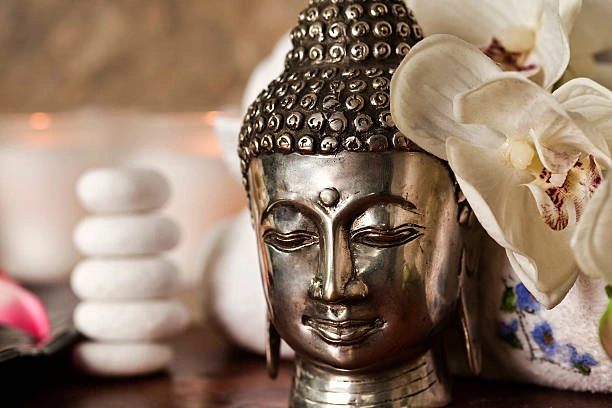Three Meditation Techniques
Meditation not only brings short-term changes to brain activity but can also potentially lead to permanent changes in the brain. This means meditation can effectively eliminate negative emotions like anxiety and sorrow, create a sense of inner happiness, and even reshape the brain. It is also an important Buddhist approach for addressing depression. Just as we absorb nutrients from food to maintain physical health, we can also derive the essential nourishment for the mind from the joy of meditation, keeping our spirit strong and agile.
With so many benefits to meditation, how can one practice it? Here are three simple and easy-to-learn meditation techniques that you can choose from to find the most suitable practice for yourself.

Method 1: Counting the Breath
After sitting down and calming yourself, focus all your attention on your breathing. Do not deliberately speed up or slow down your breath; just maintain a normal, healthy breathing pace.
Once your attention is fully concentrated on your breathing, let go of any thoughts about family, work, or life. Do not dwell on the past or anticipate the future; release all distractions and aim to reach a state as calm as a peaceful sea. If that’s difficult, at least try to achieve a state that’s fairly tranquil, without any waves forming.
Count each breath in and out as one cycle, and count up to seven. After reaching seven, start over from one, repeating the cycle. Each set of seven counts as one round, and aim to do three rounds, totaling 21 breaths.
This approach comes from the experience of past practitioners. Counting higher numbers, such as 15, 16, or 20, can lead to distraction, so it’s best to keep cycling from one to seven. You can adjust the number of rounds based on the time available. If you meditate for an hour, focus solely on breathing and counting during that time to free yourself from stress.
Why does this method relieve stress?
When all attention is focused on the breath, emotions become concentrated rather than scattered. Once concentrated, all thoughts reset to zero—there is no thinking about family, relationships, or work. You let go of the past, do not anticipate the future, and make no judgments about the present. During that half-hour or hour, you completely release everything. Once the mind settles, it enters a very peaceful state where all troubles, negative emotions, and stress vanish. Initially, you may only be able to sustain this for a minute, then gradually extend it to two, five, or ten minutes. Ideally, you should meditate for at least 20 minutes daily for the best results.

Method 2: Focused Object Meditation
Place an object in front of you—this could be a pen, a bottle of water, a grain of rice, or anything else. Lock your gaze and attention onto the object, allowing no thoughts to arise, and calm your mind, maintaining this focus for a few minutes. At first, you may only be able to manage five minutes; gradually, you can extend this to ten, twenty minutes, or more.
It is important to note that when you begin, your mind may feel peaceful, but after a few seconds, subtle thoughts or slight mental disturbances may arise, like tiny waves. Try to notice and control these disturbances, reducing them to the smallest possible level. Although reaching a perfectly tranquil state may not be immediately possible, aim to make the mental fluctuations very minimal.
After calming down, you may feel your mind becoming extremely clear, and your thinking will be highly responsive. If you overuse your brain or experience significant stress, meditating for a few minutes each night can help filter out the day’s fatigue and keep your mind relaxed and joyful. Many people, including business professionals, have found solutions to longstanding problems during meditation.
Method 3: Meditation on the Illusory Nature of Life
Sit down and think: What are the things I cling to, cherish, or care about throughout the 24 hours of each day? Use logical thinking to assess this, and you will conclude that everything is a kind of illusion. When you deeply believe this from the core and can genuinely feel that “life is indeed like a dream,” stop analyzing and just rest in this understanding. This can be done for a minute, five minutes, or ten minutes. Initially, the feeling may disappear after just a minute or so.
Don’t worry; keep repeating the process of thinking, experiencing, and resting in this awareness for half an hour or an hour. Over time, this practice will gradually change your perspective and help reduce stress.
These methods can all alleviate stress. Even if you are not interested in studying Buddhism, you can still try them. Although these are Buddhist practices, they do not involve any religious beliefs. Practicing these techniques does not equate to learning Buddhism. It is like yoga, which can be practiced as a purely physical exercise without being tied to Hinduism or Buddhism. Similarly, these meditation practices can be used purely as techniques for health and wellness.






